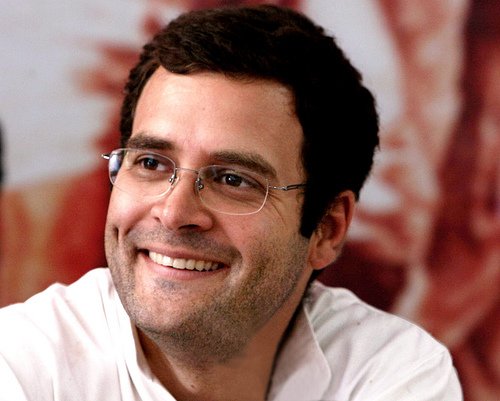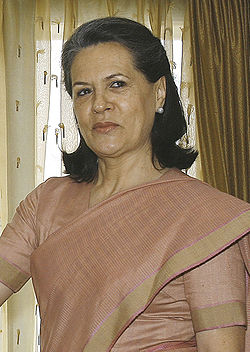
A special court in Hyderabad found all the ten accused in the Satyam scam guilty of cheating, forgery, destruction of evidence and criminal breach of trust. This includes the founder and the Chairman of the company B Ramalinga Raju.
The decision came more than six years after the scam first came to light. On January 7, 2009, Raju wrote a letter to the board of directors of Satyam Computer Services, in which he admitted to cooking the books of the company. A copy of the letter was sent to the stock exchanges as well as the Securities and Exchange Board of India.
In this letter Raju admitted to inflating the cash and bank balances of the company by Rs 5,040 crore. The company’s total assets as on September 30, 2008, stood at Rs 8,795 crore.
Of this cash and bank balances stood at Rs 5,313 crore which was nearly 60% of the total assets. This was overstated by Rs 5,040 crore. The company basically had cash and bank balances of less than Rs 300 crore.
Raju also admitted to fudging the last financial result that the company had declared, for the period of three months ending September 30, 2008. The company had reported revenues of Rs 2,700 crore, with an operating margin of 24% of revenues or Rs 649 crore. These numbers were made up. The actual revenues were Rs 2,112 crore with an operating margin of Rs 61 crore or 3% of the total revenues.
So, Satyam had made a profit of Rs 61 crore but was declaring a profit of Rs 649 crore. The difference was Rs 588 crore. The operating profit for the quarter was added to the cash and bank balances on the balance sheet. Hence, cash and bank balances went up by an “artificial” Rs 588 crore just for the three month period ending September 30, 2008.
This was a formula that Raju had been using for a while. First Satyam over-declared its operating profit. Once this fudged operating profit was moved to the balance sheet, it ended up over-declaring its cash and bank balances. And this led to a substantially bigger balance sheet than was actually the case.
The company had total assets of Rs 8,795 crore as on September 30, 2008. Once the Rs 5,040 crore of cash and bank balances that were simply not there were removed from this, the “real” total assets fell to a significantly lower Rs 3,755 crore.
Raju went on to say that: “The gap in the Balance Sheet has arisen purely on account of inflated profits over a period of last several years (limited only to Satyam standalone, books of subsidiaries reflecting true performance). What started as a marginal gap between actual operating profit and the one reflected in the books of accounts continued to grow over the years.”
What was Raju upto? Raju’s fraud was no Enron, where complicated derivative transactions were used to boost revenues as well as profit. He had been cooking the books since 2003 by simply over-declaring revenues and profits. In the process he ended up boosting his balance sheet as the cash and bank balances kept going up.
So, how did Raju manage to boost revenues? In order to do this Raju created fictitious clients with whom Satyam had entered into business deals. This was again something akin to Enron, which essentially entered into business deals with its subsidiaries. The subsidiaries paid Enron for the deal by borrowing money. While the revenues brought in from the subsidiaries was recorded by Enron, the debt that they had taken on, wasn’t.
Getting back to Raju, in order to record the fake sales he introduced 7000 fake invoices into the computer system of the company. He couldn’t stop at this.
The clients were fake. Fake clients could not make real payments. Given this, the company kept inflating the money due from its clients (or what Raju called debtors position in his letter).
Further, once fake sales had been recorded, fake profits were made. And fake profits brought in fake cash which needed to be invested somewhere. This led to Raju creating fake bank statements(forged fixed deposit receipts) where all the fake cash that the company was throwing up was being invested.
Raju then tried to use this “fake cash” and buy out two real estate companies called Maytas Properties and Maytras Infra (opposite of Satyam and promoted by the family) for a total of $1.6 billion. But this did not work out. As Raju said in his confessional statement: “The aborted Maytas acquisition deal was the last attempt to fill the fictitious assets with real ones. Maytas’ investors were convinced that this is a good divestment opportunity and a strategic fit. Once Satyam’s problem was solved, it was hoped that Maytas’ payments can be delayed.”
The idea was to have some “real” assets against all the “fake” cash that the company had managed to accumulate. But that did not happen and after this, Raju had no way out but to come clean.
The question is how could Raju run such a big scam for such a long period of time. Satyam’s accounts were audited by Price Waterhouse, a member-firm of PricewaterhouseCoopers International Ltd — since the financial year 2000-2001.
The auditor had no clue that Satyam’s assets were overstated by more than Rs 5,000 crore. When the scam first broke out a middle level executive from a Big 4 consulting firm told me: “All the auditor needed to ask was the bank statements of the various banks in which this (supposed) cash had been deposited or mutual funds it had been invested in. This is overstatement of Rs 5,000 odd crore we are talking about, not Rs 500.” The auditor clearly did not do that.
The auditor is paid to ask questions; in this case it seems to have been paid not to ask any. The company couldn’t have hoodwinked the investors without the auditor being on its side. This was no complicated accounting fraud like Enron was.
The many analysts who covered Satyam also did not have any clue about the fact that the profits as well as revenues of Satyam were fake. Brokerage analysts who follow companies need to keep companies in a good humour. Without that, they run the risk of being given limited or at times no access to the company, at all. This explains why none of the analysts caught on to what was happening at Satyam. It also explains why the number of sell recommendations on stocks put out by brokerage analysts are lower when compared to the number of buy recommendations that brokerages put out.
And finally we come to the media. It had no clue of what was happening at Satyam. One reason for this lies in the fact that the Indian media over the years has been extremely taken in by the IT companies and the people who run them.
The case with Satyam’s Raju was no different. Lot of magazines and newspaper wrote stories on him and painted him as a person who could do no wrong. This blinds investors, media and experts who follow a company. This comes from the need of the media to create a story around the individual.
As Nassim Nicholas Taleb writes in his book Fooled by Randomness on how the Halo effect around a CEO is built up by the media: “We would get very interesting and helpful comments on his remarkable style, his incisive mind, and the influences that helped him achieve that success. Some analysts may attribute his achievement to precise elements among his childhood experiences. His biographer will dwell on the wonderful role models provided by his parents; we would be supplied with black and white pictures in the middle of the book of great mind in the making.”
Something similar had happened with Satyam as well. And given this the media expected Satyam to do no wrong. The Halo effect was clearly at work in case of Satyam as well. Investors could see Raju doing no wrong. Raju even sold his shares in Satyam to fund social causes. How could such a man be a fraud? When the Halo effect is at work, the ability to ask incisive pointed questions clearly goes down, and that’s what happened in Satyam’s case as well.
So, while Raju ran his fraud, the auditor slept, the analysts slept and so did the media. To be fair, the media did an excellent job of exposing Raju and his many other ‘shenanigans’ after he had confessed.
Now more than six years later, the first decision in the Satyam scam has been made. Of course, we haven’t seen the last of this case, given the slow pace at which our judicial system works.
Stay tuned.
(Vivek Kaul is the author of the Easy Money trilogy. He tweets @kaul_vivek)
The column was originally published on Firstpost on Apr 9, 2015



